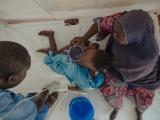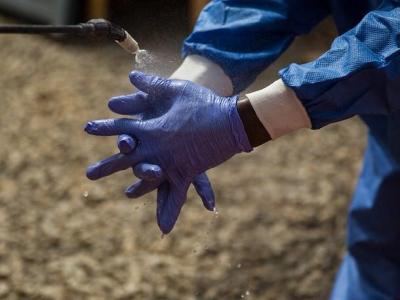The US Food and Drug Administration (FDA) announced yesterday that its investigation over the Thanksgiving holiday further narrowed the likely source of contaminated romaine to the Central Coast growing region of central and northern California.
Also, the FDA set the stage for romaine from unaffected areas to return to the market, including product from hydroponic and greenhouse facilities, and the Centers for Disease Control and Prevention (CDC) said it has received reports of 11 more Escherichia coli O157:H7 illnesses linked to the outbreak.
FDA spells out source labeling
In a statement, FDA Commissioner Scott Gottlieb, MD, said so far the investigation suggests that the romaine linked to the outbreak came from parts of California that grow the lettuce over the summer and is "end of the season" product harvested from the areas. He added that the FDA trace-back investigation is continuing, with the goal of identifying a specific location and factors that led to the contamination.
When the outbreak occurred, the vast majority of romaine on the market was grown in the Central Coast area, and harvesting has now ended for the season, Gottlieb said. Growing and harvesting has now shifted to winter fields, which are mainly in the desert region of California's Imperial Valley, desert regions of Arizona in and around Yuma, and Florida. Also, Mexico exports romaine lettuce to the United States during the winter, with smaller amounts grown in other states.
"At this time, the FDA has no information to suggest any of these growing areas are involved in the current outbreak, which began well before any romaine lettuce from these winter growing locations was available for harvest," Gottlieb said, adding that there's no evidence to suggest that hydroponic- and greenhouse-grown romaine are implicated in the outbreak.
The withdrawal of all romaine, which came right before Thanksgiving, was a critical "clean break" in the US supply that allowed potentially contaminated lettuce to be purged from the market, he added.
The FDA recently met with romaine producers and distributors about product labeling and dating to assure consumers that any romaine that comes back into the market is not linked to the current outbreak, a practice Gottlieb said will become the standard for the product. He added that the leafy greens industry has established a task force to look at product traceability standards and to explore how the contamination happened and prevent ongoing problems with romaine lettuce.
In new advice for consumers, the FDA said consumers should not eat or use romaine that doesn't have harvest location and date information or a label that says it's hydroponically or greenhouse grown.
For growers, processors, distributors, and retailers, the FDA said the packaged products should prominently be labeled with the growing region and harvest date, and that unwrapped whole romaine heads should have a clear and prominent label at the point of sale.
Ties to 2017 outbreak
Health officials have said that the E coli strain in the current outbreak is closely related to a 2017 outbreak tied to leafy greens in the United States and specifically to romaine in Canada. Earlier this year, an unrelated E coli outbreak linked to romaine grown in Arizona's Yuma region sickened at least 210 people in 36 states.
The California Leafy Greens Marketing Agreement (LGMA), a food safety trade group, said yesterday that it supports the investigations and labeling changes and is sorry for the illnesses linked to the outbreak.
"We must do better and redouble efforts to determine how and why this happened," the group said in a statement. "In the meantime, the LGMA is communicating with leafy greens growers and shippers to ensure they understand how to incorporate the new labeling practices so that moving forward packages will clearly identify the specific region of production and harvest date."
CDC reports 11 more cases, updates advice
In its update yesterday, the CDC reported 11 more illnesses, raising the outbreak total to 43 cases in 12 states. Sixteen people have been hospitalized, including one with hemolytic uremic syndrome, a potentially fatal kidney complication. No deaths have been reported.
Canada has reported 22 related illnesses in three provinces.
Illness onsets in US patients range from Oct 18 to Oct 31. Patients range in age from 1 to 84 years, and 69% of the patients are female. California has reported the most illnesses, at 11, while New Jersey has recorded 9 and Michigan 7.
Interviews that compared food exposures of sick and healthy patients found that the percentage who ate romaine before they got sick was significantly higher: 88% in those who were ill compared with 47% in their healthy peers.
Based in the FDA's investigation findings so far, the CDC modified its advice for consumers, urging them not to eat, serve, or sell any romaine harvested from the Central Coast growing region of California.
"If you do not know where the romaine is from, do not eat it," the CDC said.
See also:
Nov 26 FDA statement
Nov 26 CDC update
Nov 26 LGMA statement




















